Key Takeaways
-
Spiders Are Not Insects: Spiders belong to the class Arachnida, while insects are classified under Insecta.
-
Structural Differences: Spiders have two body segments, eight legs, and no wings or antennae; insects have three segments, six legs, and often wings and antennae.
-
Natural Pest Control: Spiders help reduce indoor pests by feeding on insects like flies, mosquitoes, and moths.
-
Most Are Harmless: While most spiders are not dangerous, venomous species like black widows and brown recluses should be approached with caution.
-
Home Management Tips: Prevent indoor spider issues by sealing entry points, reducing clutter, and using natural repellents like peppermint oil or vinegar.
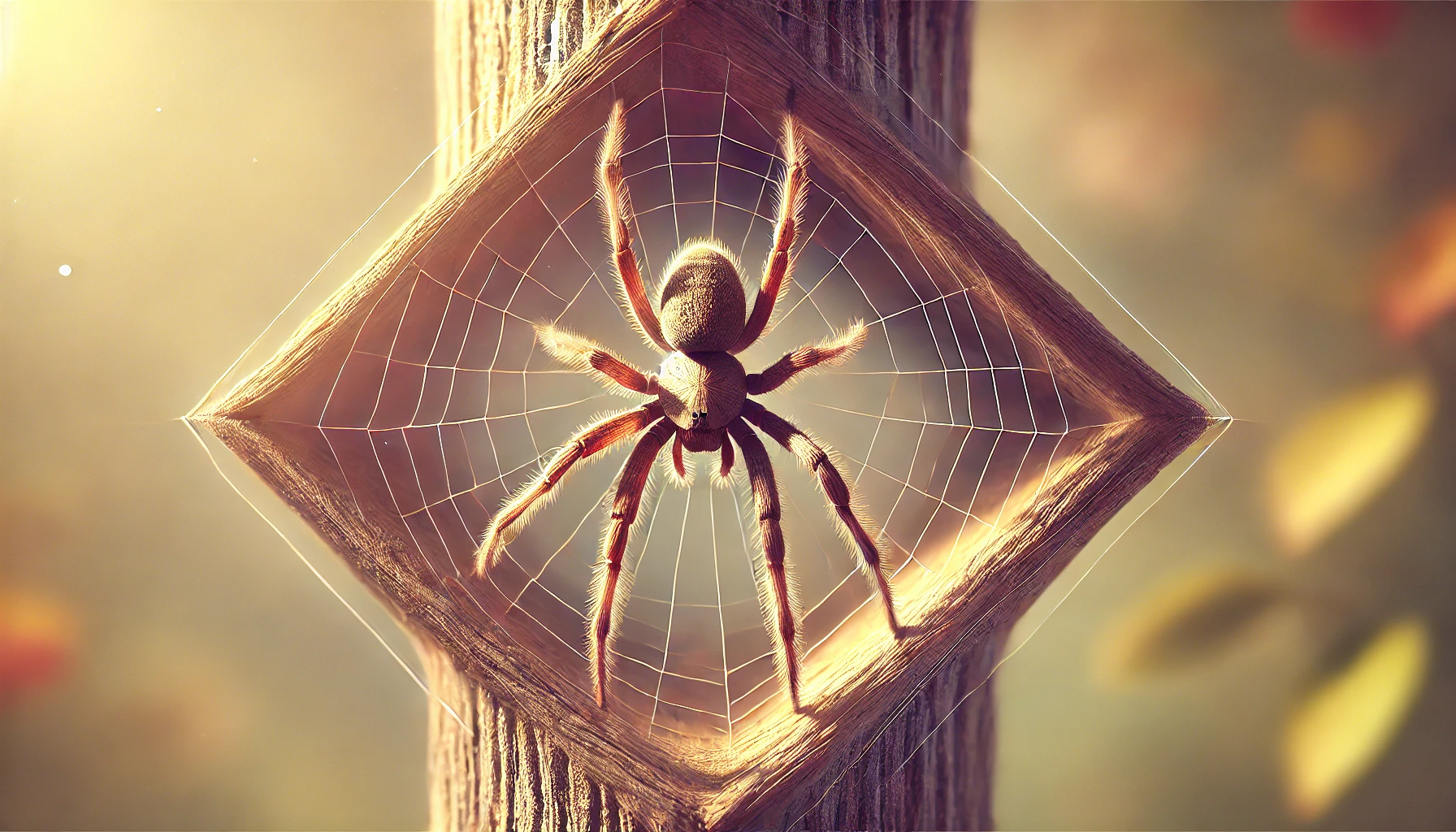 Have you ever found yourself jumping at the sight of a Spider? You probably thought, “Ugh, another insect!” But here’s a surprise: spiders aren’t insects at all.
It’s a common misconception to think of spiders as insects, but the reality is quite different. If they’re not insects, what exactly are they, and why does it even matter? Spiders belong to a separate class of arthropods and have distinct characteristics that set them apart from insects. Understanding what spiders are—and how they differ from insects—can change how you deal with them in your home.
This article serves as a comprehensive guide clarifying that spiders are arachnids, not insects, highlighting their distinct physical differences and behaviors. It also offers practical tips for safely managing spiders around your home.
If spiders are becoming frequent visitors in your home, it might be time for a professional checkup. Schedule your Free Pest Inspection Today, and let our experts ensure your home stays spider-free.
Have you ever found yourself jumping at the sight of a Spider? You probably thought, “Ugh, another insect!” But here’s a surprise: spiders aren’t insects at all.
It’s a common misconception to think of spiders as insects, but the reality is quite different. If they’re not insects, what exactly are they, and why does it even matter? Spiders belong to a separate class of arthropods and have distinct characteristics that set them apart from insects. Understanding what spiders are—and how they differ from insects—can change how you deal with them in your home.
This article serves as a comprehensive guide clarifying that spiders are arachnids, not insects, highlighting their distinct physical differences and behaviors. It also offers practical tips for safely managing spiders around your home.
If spiders are becoming frequent visitors in your home, it might be time for a professional checkup. Schedule your Free Pest Inspection Today, and let our experts ensure your home stays spider-free.
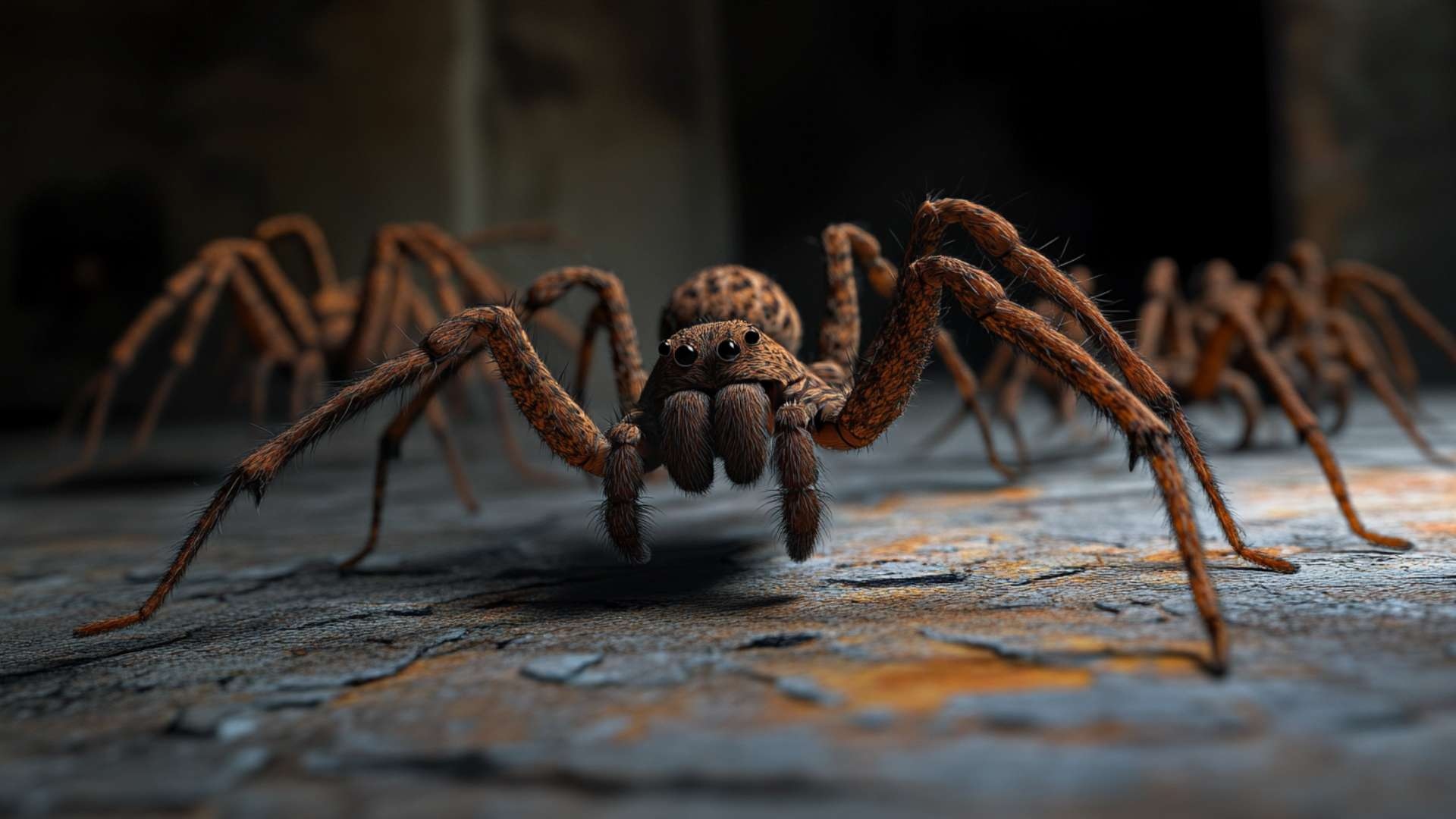

Not getting a solution?
Get your free pest control estimate today!What Are Spiders?
Spiders belong to a group called arachnids, not insects. Arachnids include creatures like scorpions, ticks, and mites. Sure, spiders and insects share some basic traits—like crawling around your house—but they have distinct differences that set them apart.Are Spider Insects?
Spiders and insects are both part of the phylum Arthropoda, which also includes crustaceans and millipedes. However, they belong to different classes, with spiders classified as arachnids and insects falling under the class Insecta. Arachnids, such as spiders, scorpions, ticks, and mites, have eight legs, lack antennae, and have bodies divided into cephalothorax and abdomen. In contrast, insects, including ants, butterflies, beetles, and flies, have six legs, a pair of antennae, and bodies divided into three segments: head, thorax, and abdomen. Many insects also possess wings. While spiders and insects share certain characteristics as arthropods, their distinct anatomical and structural features set them apart.Why Is a Spider Not an Insect?
Although spiders and insects are both members of the arthropod family, their distinct anatomical and biological differences place them in separate classifications. Spiders are from class Arachnida, while insects are part of the class Insecta.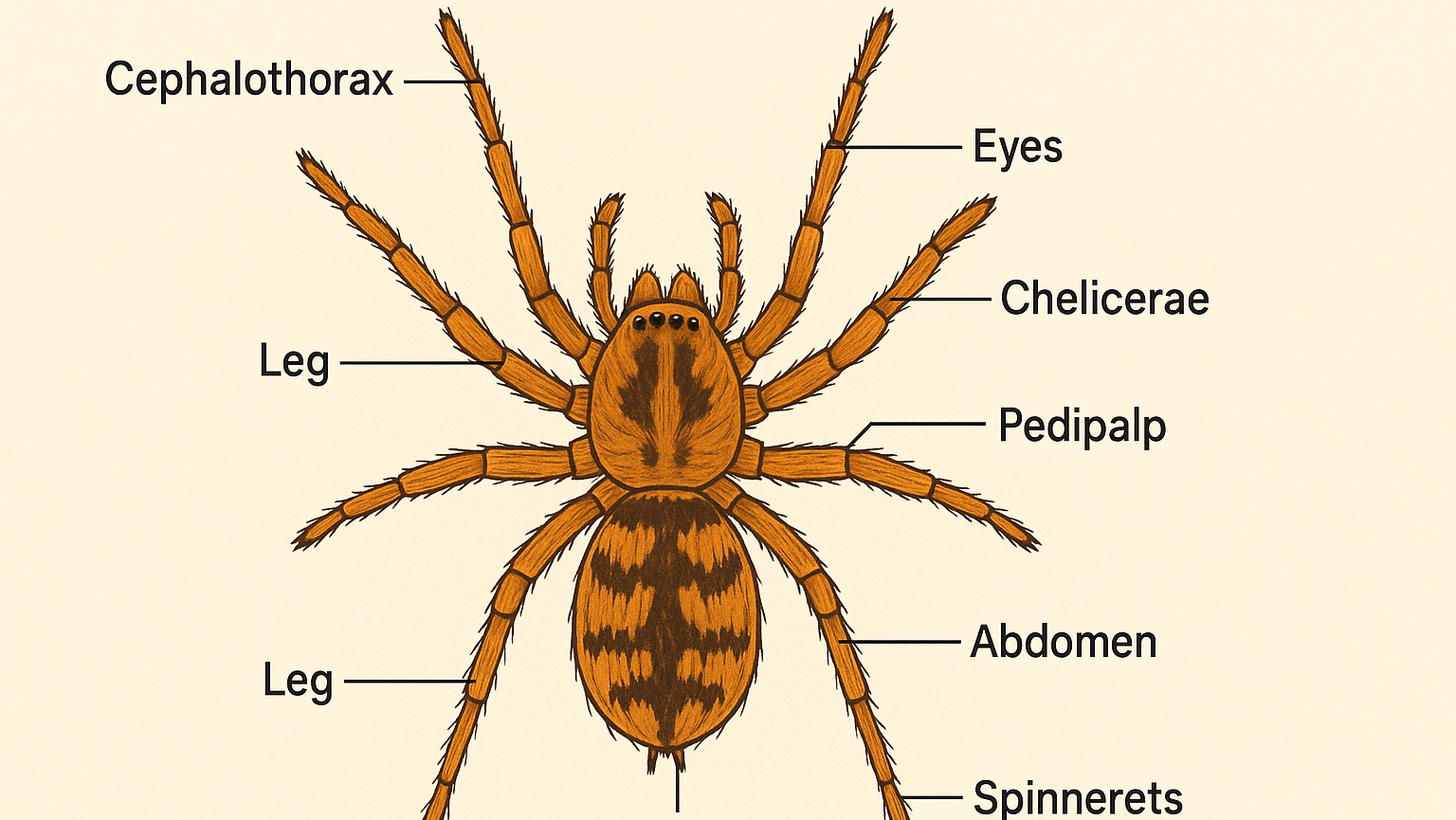 Body Structure
Spiders have two main body segments. First is the cephalothorax (a fusion of the head and thorax) and second is the abdomen. This compact structure aids in their predatory lifestyle. While on the other hand, insects have three body parts, the head, thorax, and abdomen. This division allows for specialized functions like flying or carrying sensory organs.
Body Structure
Spiders have two main body segments. First is the cephalothorax (a fusion of the head and thorax) and second is the abdomen. This compact structure aids in their predatory lifestyle. While on the other hand, insects have three body parts, the head, thorax, and abdomen. This division allows for specialized functions like flying or carrying sensory organs.
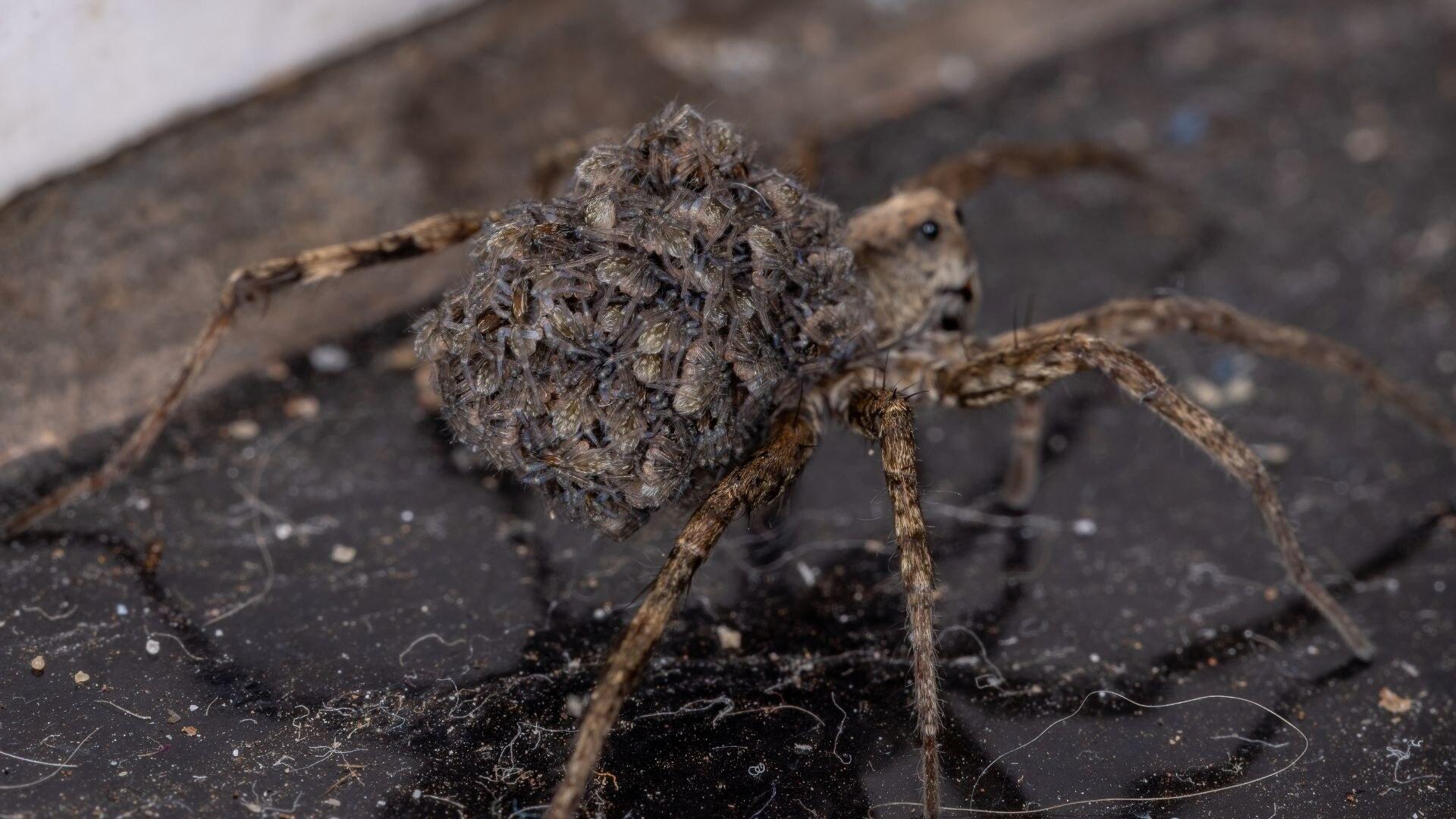 Legs
Spiders can easily be identified by their eight legs, which are all attached to the cephalothorax. This feature makes them highly efficient hunters. Insects, on the other hand, have six legs connected to the thorax, with many species also possessing wings for mobility.
Wings and Antennae
Spiders lack both wings and antennae. That’s why you’ve probably never spotted a flying spider—because they simply don’t exist! Instead, spiders primarily rely on their sensitive hairs and vibrations in their webs to detect prey or potential threats. Insects, on the other hand, frequently have wings (think bees, butterflies, and flies) and antennae. Antennae serve crucial sensory roles for insects, helping them smell, taste, feel, and even communicate with other insects.
Eyes
Spiders typically have eight simple eyes arranged in various patterns across their heads. These eyes can detect basic movement and variations in light and shadow, helping spiders sense predators and prey. In contrast, insects usually have two prominent, compound eyes. Each compound eye consists of thousands of tiny lenses, providing insects with a broad field of vision and heightened ability to detect motion and colors.
Now You can also Go through our Species, Spider Control, and DIY Guide sections for additional resources on spiders and ways to tackle a spider infestation.
Legs
Spiders can easily be identified by their eight legs, which are all attached to the cephalothorax. This feature makes them highly efficient hunters. Insects, on the other hand, have six legs connected to the thorax, with many species also possessing wings for mobility.
Wings and Antennae
Spiders lack both wings and antennae. That’s why you’ve probably never spotted a flying spider—because they simply don’t exist! Instead, spiders primarily rely on their sensitive hairs and vibrations in their webs to detect prey or potential threats. Insects, on the other hand, frequently have wings (think bees, butterflies, and flies) and antennae. Antennae serve crucial sensory roles for insects, helping them smell, taste, feel, and even communicate with other insects.
Eyes
Spiders typically have eight simple eyes arranged in various patterns across their heads. These eyes can detect basic movement and variations in light and shadow, helping spiders sense predators and prey. In contrast, insects usually have two prominent, compound eyes. Each compound eye consists of thousands of tiny lenses, providing insects with a broad field of vision and heightened ability to detect motion and colors.
Now You can also Go through our Species, Spider Control, and DIY Guide sections for additional resources on spiders and ways to tackle a spider infestation.
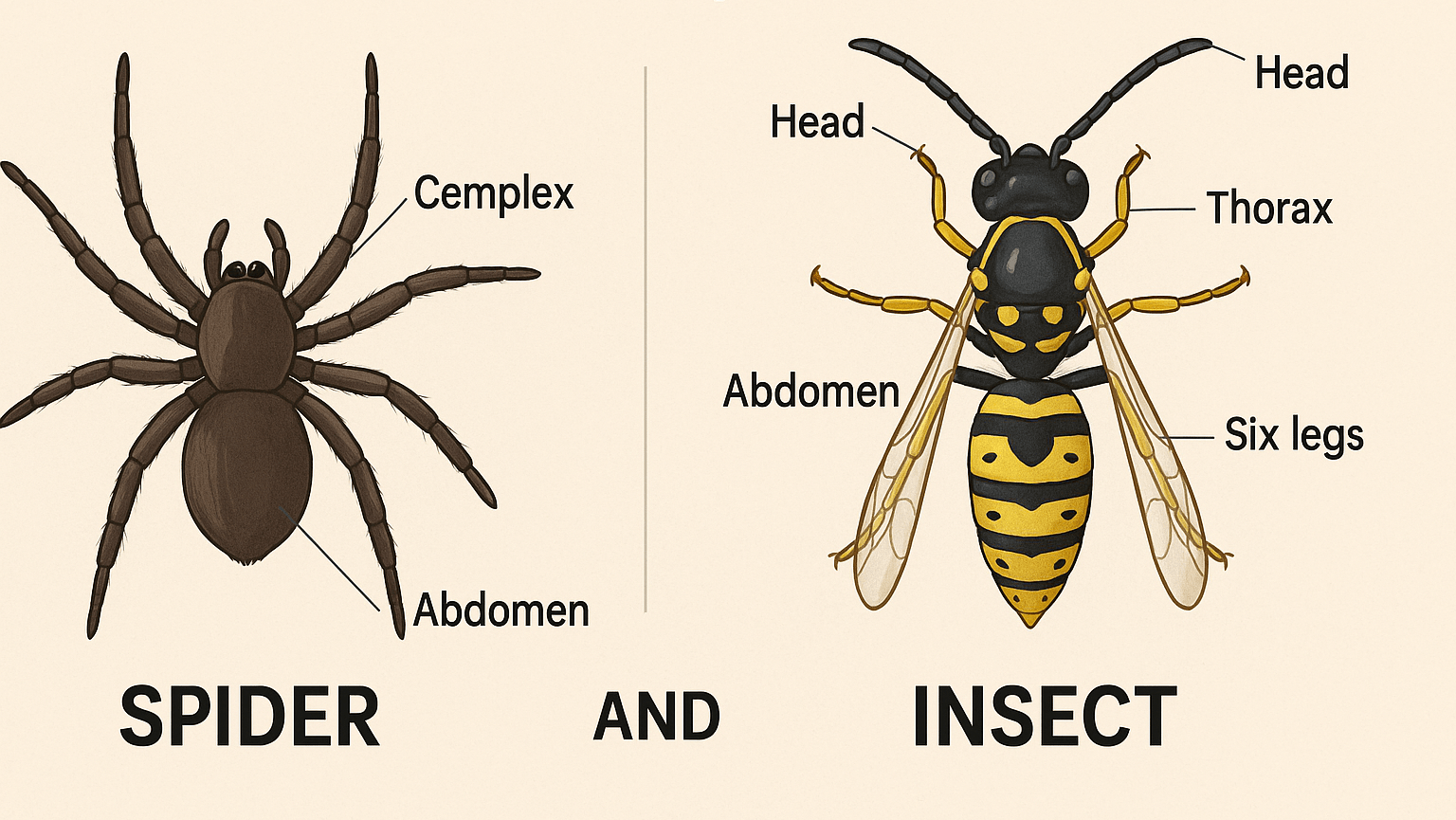
Key Differences Between Spiders and Insects
| Feature | Spiders (Arachnids) | Insects (Insecta) |
|---|---|---|
| Number of Legs | 8 | 6 |
| Body Segments | 2 (cephalothorax + abdomen) | 3 (head, thorax, abdomen) |
| Antennae | None | 1 pair |
| Eyes | Typically 8 eyes | Usually 2 compound eyes |
| Wings | None | Many have wings |
| Development | Direct development (no metamorphosis) | Complete or incomplete metamorphosis |
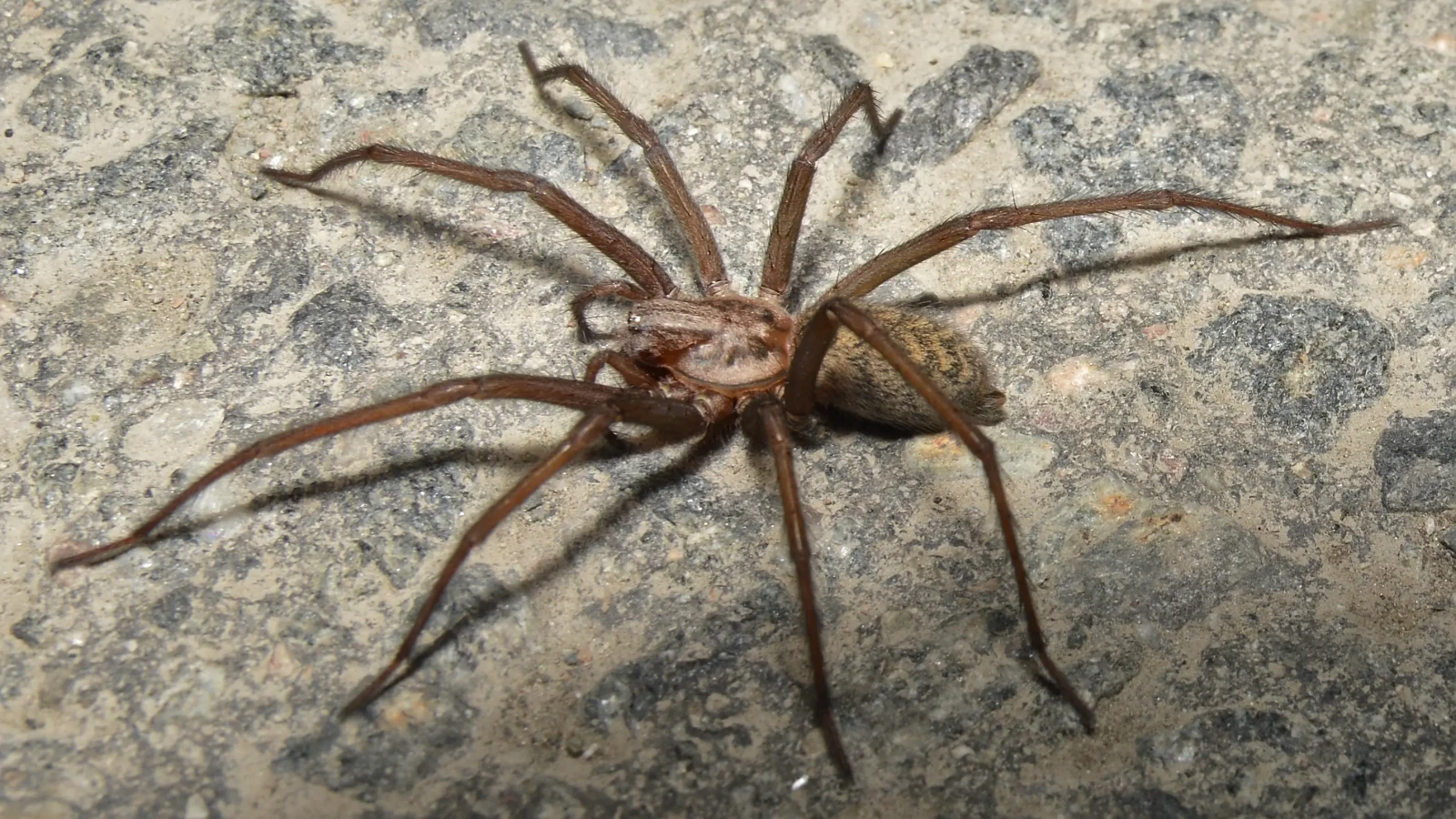
Why Knowing the Difference Matters for Homeowners
You might wonder if all this classification talk is necessary. It is because understanding these differences can help you handle spiders and insects differently. Spiders provide some real benefits you might not have considered.Are There Any Similarities Between Spiders and Insects?
Spiders and insects, though different in many ways, share several similarities as members of the arthropod phylum. Both have an exoskeleton made of chitin, which provides protection and structural support. Their bodies are segmented, a hallmark of arthropods, allowing for flexibility and specialized functions. Other than that, both spiders and insects possess jointed appendages that facilitate movement and interaction with their environments. Ecologically, they play critical roles. While insects often contribute to pollination, spiders help control pest populations, maintaining balance within ecosystems.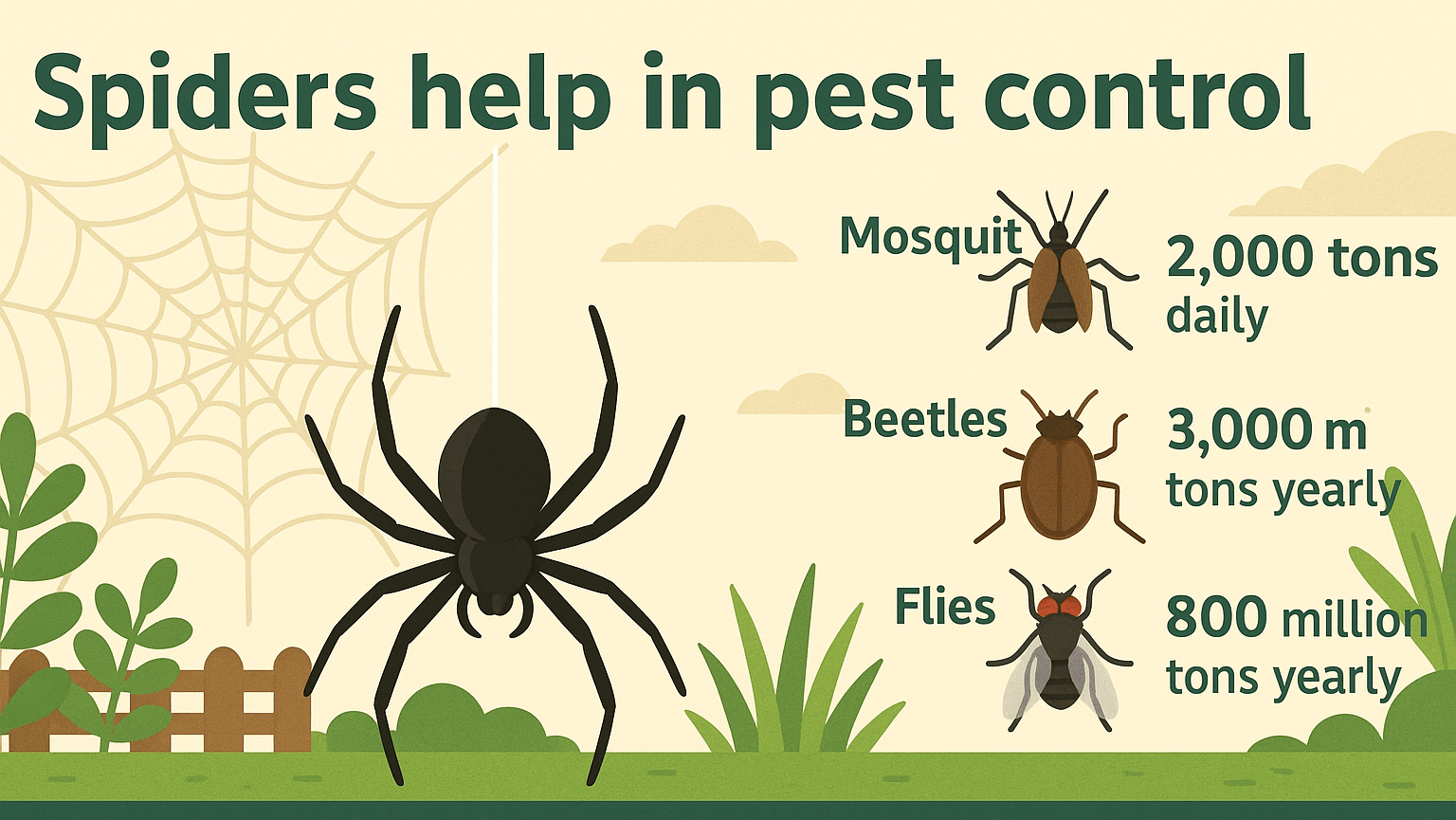
Spiders: Nature’s Pest Control
Here’s something that might change your perspective: spiders eat insects. That spider you saw hanging quietly in the corner? It’s probably been catching pesky flies, mosquitoes, and even cockroaches while you’re not looking. One spider can remove dozens of insects each month. Sure, spiders can be creepy, but they help reduce the insect population around your home. You might even say they’re working for you—without charging a dime. But Are Spiders Dangerous? Most spiders you’ll encounter indoors are harmless. They might look scary, but they rarely bite, and their bites usually aren’t dangerous. Even large spiders, like wolf spiders or jumping spiders, pose little threat to humans. However, two spider species in the U.S. deserve extra caution: the black widow and the brown recluse. These spiders can deliver venomous bites requiring medical attention.Venomous Spider Identification
-
Black Widow: Easily recognized by its shiny black body and a red hourglass marking on the underside of its abdomen.
-
Brown Recluse: Features a light to dark brown body with a distinctive violin-shaped mark behind its head—typically found in undisturbed areas.
Tips to Keep Spiders Out of Your Home
- Even though spiders can be helpful, you probably don’t want them hanging out in your living room or kitchen. Here are simple, practical ways to manage spider populations indoors:
-
Seal Cracks and Openings: Use caulk or weatherstripping to close gaps around windows, doors, and vents where spiders may enter.
-
Reduce Clutter: Clear out piles of clothes, boxes, and unused items where spiders might hide and build webs.
-
Smart Lighting Choices: Switch to yellow-tinted bug lights or motion-activated lights to reduce insect activity near doors and windows.
-
Control Other Pests: Eliminating the spiders’ food source—other insects—will discourage them from sticking around.
-
Natural Repellents: Spray peppermint oil, vinegar, or citrus-based solutions around baseboards, corners, and window sills to deter spiders naturally.





